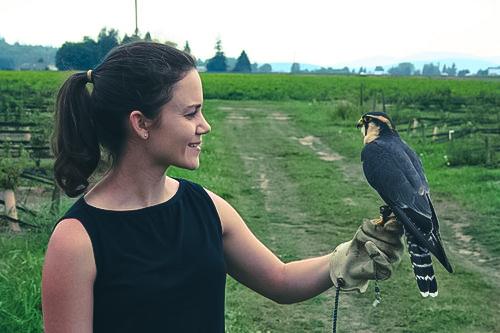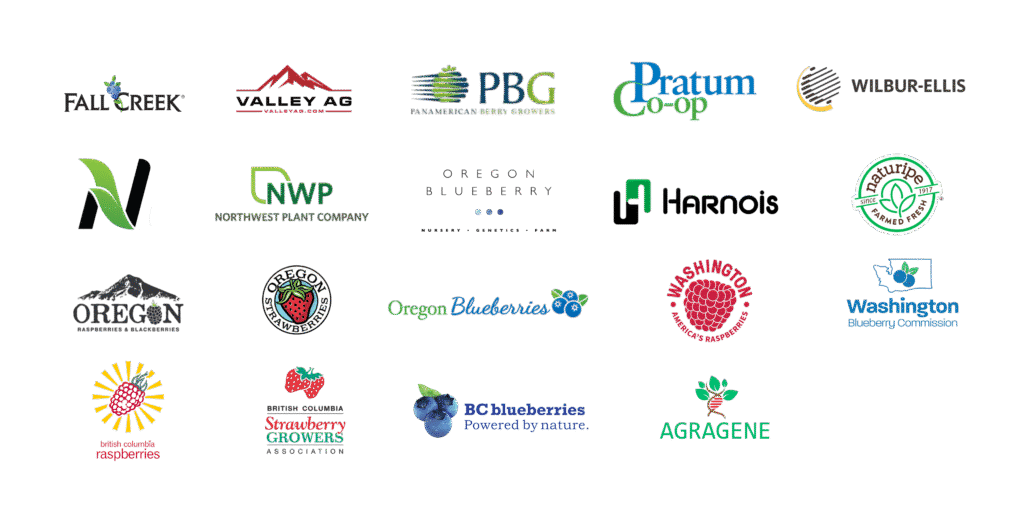Bird control
Falconry
Learn more about falconry, various techniques falconers use to train raptors, and training without domesticating a raptor,

Though falconers use various techniques to train raptors for specific purposes, most falconers pride themselves on training without domesticating a raptor, so that it can be released at any time and easily survive in the wild. For information on techniques that falconers use go here.
Abatement Falconry
This is when a traditional falconer using specific falconry techniques for the purpose of pest management. Unlike raptors trained for sport or hunting, abatement raptors are trained to continually haze instead of kill pest birds. This is the recommended type of falconry to use for bird management.
It is the practice of hunting for live prey using a raptor such as a falcon, hawk, or eagle. The raptor is often allowed to eat the prey it catches. Traditional falconry does not keep pest birds out of an area for long periods of time.
- Raptor scares but does not eat birds.
- Reward system keeps raptors flying.
- Can give the impression that there are many falcons in one area.
- Keeps pest birds so busy they don’t have time to eat.
Traditional Falconry
Falconer hunts for sport.
Raptor kills and eats prey.
Birds not continually threatened by raptor.
Falconry for Bird Control
3 Types of falconers for bird control
Falconer using abatement techniques– The most aggressive raptor bird management method involves hiring a falconer with pest bird abatement experience to be in your field just before as well as throughout harvest.
Training an on-farm employee – Some raptor pest bird abatement companies will train an employee in abatement techniques and raptor care during harvest. The bird is returned to the abatement company for the rest of the season.
Falconer using Traditional falconry techniques – Not recommended for bird management, but that doesn’t mean that it isn’t useful. If you are in a situation where a falconer asks to use your fields to hunt or train, or you seek out someone and offer your fields, the raptor and falconer presence may certainly benefit you, however brief, at no cost.
What to look for in a falconer – Regardless of the type of falconer you use for bird abatement, there are basic characteristics and skills to look for before hiring someone to reduce pest birds on your farm. Go to Choosing a Falconer for a list.
Cost
Each falconer has varying cost inputs to cover. Of the falconers and growers we interviewed, falconry program costs ranged from $300 to $1000 per day, with the majority of programs closer to the middle range of $600 a day.
FAQ
Each grower’s situation is different. To give falconers optimal opportunity to keep your fields pest bird free, allow them to enter your fields before pest birds arrive to give the raptors and falconer time to establish themselves and learn the lay of the land. Falconry can still be effective on an established pest bird population, but it will be harder to get rid of the pest birds than if the falconer had entered the field prior to their arrival. There is a study out of California that evaluated three bird dispersal programs using falconry. The study observed three strawberry sites to evaluate the effect of various falconry programs on pest bird fruit damage. The bird damage in each field before the study began varied between 5% and 35%. The study tested three possibilities:
1. Preventive, trained falcon release prior to bird pest damage.
2. Release in response to fruit damage.
3. Release in response to fruit damage supplemented by balloon launching.
The results showed that falconry was very effective in open field and near man-made structures. It was not seen as feasible near immediate natural bird shelter habitats. The use of a balloon in combination with falconry was a useful IPM approach that may extend the effect of falconry alone. Go here to read the full study (p. 133 of the .pdf).
Falconers specializing in abatement that were interviewed for this guide all agreed that abatement techniques were very effective on starlings, but they had differing opinions about abatement falconry’s ability to decrease or eliminate sparrow, robin and cedar waxwing. One abatement falconer claimed that robins cannot be ridded from a field easily because they dive low into the bush, as do blackbirds and cedar waxwings. Other falconers said that as long as a grower establishes a raptor program before pest birds arrive, the bird handler and raptor should be able to handle any pest bird species. Some abatement falconers said that robins simply required more raptor pressure than other pest birds to get rid of them. All agreed that a raptor program can show immediate as well as long term results. Over time, such as in the course of several seasons, a continuous raptor pest bird abatement program can diminish pest bird populations or rid an area of them entirely.
Growers typically use falconry for six to eight weeks during harvest for 15 hours a day. To cover 15 hours of daylight it is necessary to use several physically fit falcons.
The farther a raptor can see, the greater area the raptor can control. It is also true that the higher a raptor can fly, the more the raptor is able to see below. Some raptors can climb 1,000-3,000 ft. The idea is pyramid based- the higher the falcon, the wider the base.
Blueberries are a mostly a flat crop. Unlike orchards, there aren’t a lot of places for a pest bird to hide in blueberries, making blueberries easier to protect, as a raptor can spot birds in the crop fairly easily. A single raptor should be able to cover 70 to 80 acres of flat crop without difficulty. In general, one raptor should be able to cover anywhere from 20 to 100 acres. The amount of pressure needed to haze pest birds can affect how much acreage a raptor can cover.
If a grower’s field is isolated, the only appealing crop in a valley, for example, then constant pressure may be needed to establish bird management. If another crop is available to eat, a raptor can cover more acres by pushing the pest birds into that crop. Pest birds will prefer a less palatable crop to the amount of hazing they receive in a crop with an aggressive raptor presence.
It depends on how many times the birds need to fly before a falconer can determine how many raptors he will need for the job. Each raptor is different and has different strengths and abilities. One interviewed falconer said, “I had one bird capable of flying 20 times a day; so, I didn’t need very much backup for him. Most birds only fly two to three times a day though. If you need 20 flights a day to keep the birds away, you will need more [raptors].”
Things to note:
Most falconers use five to ten birds to do a contract.
Most usually have three or four raptors on reserve in a vehicle while working in the field.
You can probably do falconry abatement with two raptors, but it is risky not to have back up birds.
Each raptor flies for about 45 minutes.
Only one raptor should patrol at a time.
Abatement falconers interviewed recommended that falconers use young male or female birds between one and three years old that were either bred or purchased as chicks. In general, the birds are only used for a few years since their value increases as they mature enough to breed on their own. It was also recommended that raptors geared toward catching birds exclusively should be used, rather than raptors that are used to traditional falconry.
The falconers interviewed differed on their opinions about using native vs. non-native species. Some felt that native species had certain advantages over non-natives; however, all agreed that if the raptor is well trained and has an established relationship with the falconer, it will do the job, regardless of its origin.
Blueberries are a mostly a flat crop. Unlike orchards, there aren’t a lot of places for a pest bird to hide in blueberries, making blueberries easier to protect, as a raptor can spot birds in the crop fairly easily. A single raptor should be able to cover 70 to 80 acres of flat crop without difficulty. In general, one raptor should be able to cover anywhere from 20 to 100 acres. The amount of pressure needed to haze pest birds can affect how much acreage a raptor can cover.
If a grower’s field is isolated, the only appealing crop in a valley, for example, then constant pressure may be needed to establish bird management. If another crop is available to eat, a raptor can cover more acres by pushing the pest birds into that crop. Pest birds will prefer a less palatable crop to the amount of hazing they receive in a crop with an aggressive raptor presence.
It depends on how many times the birds need to fly before a falconer can determine how many raptors he will need for the job. Each raptor is different and has different strengths and abilities. One interviewed falconer said, “I had one bird capable of flying 20 times a day; so, I didn’t need very much backup for him. Most birds only fly two to three times a day though. If you need 20 flights a day to keep the birds away, you will need more [raptors].”
Things to note:
Most falconers use five to ten birds to do a contract.
Most usually have three or four raptors on reserve in a vehicle while working in the field.
You can probably do falconry abatement with two raptors, but it is risky not to have back up birds.
Each raptor flies for about 45 minutes.
Only one raptor should patrol at a time.
